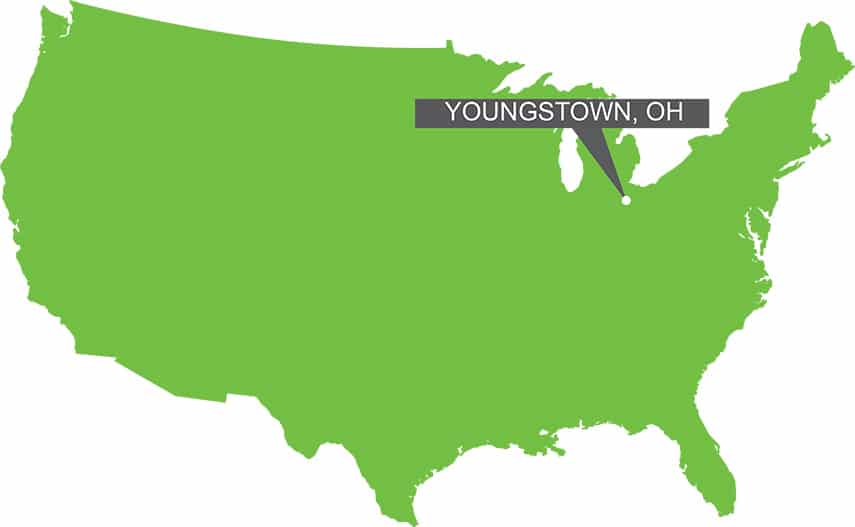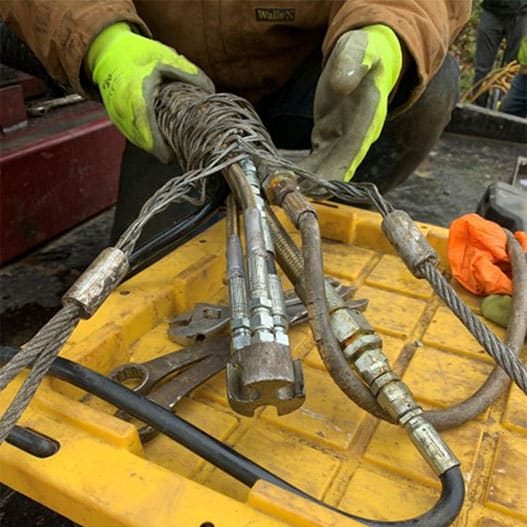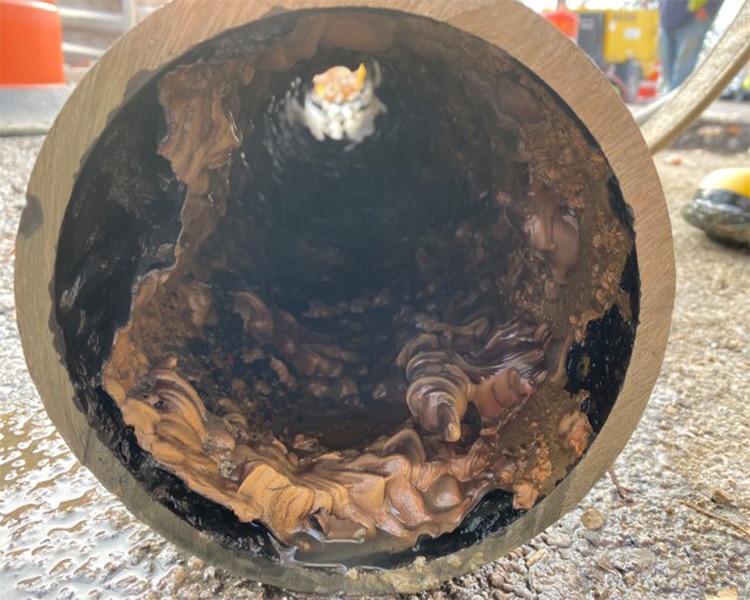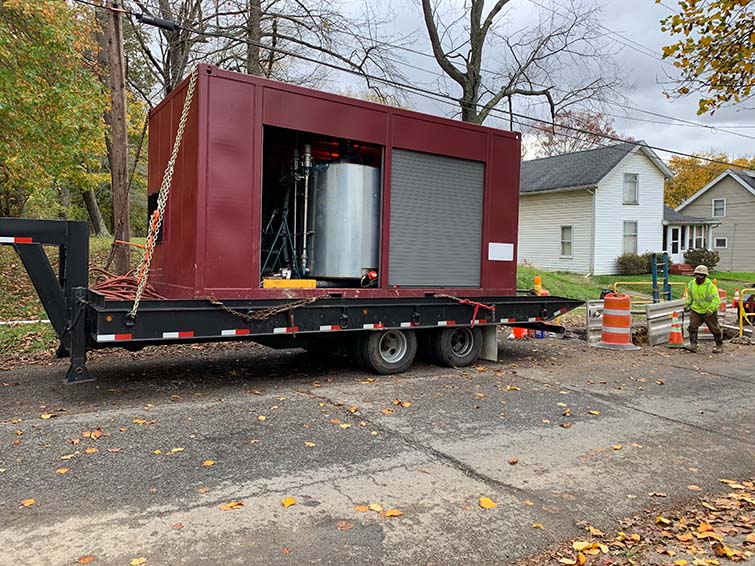Project Summary
Customer
City of Youngstown, OH

Type of Project
Spray-in-Place Pipe Rehabilitation
Results
- Cost savings of at least 35% over pipe replacement
- Significant time savings of up to 75% over pipe replacement
The City of Youngstown, Ohio’s Water Department services over 52,000 accounts – a population over 125,000 people – spread over seven communities. The City buys water from the Mahoning Valley Sanitary District and distributes about half a billion gallons a month to those communities.
As the city’s Water Commissioner, Harry Johnson III is responsible for all the department’s policies, procedures, and activities. Under his leadership, the department has adopted a forward-thinking, proactive, and best practices approach to the maintenance of its assets. That includes utilizing an Asset Management Program (AMPTM) to keep its key infrastructure in optimal condition, starting with repair, rehabilitation, and maintenance of its seven water tanks – five of which have now been fully renovated to “as new” condition by USG Water Solutions (USG), which provides asset management services to the department.
The decision to work with USG’s asset management team enabled the city to finance projects such as repair, rehabilitation, and ongoing maintenance of its water tanks over time rather than incur a significant initial capital outlay.
Client issue
Of course, water tanks are just one part of the city’s water infrastructure. As in many other communities throughout the United States, the City of Youngstown’s distribution system is aging. One of the related issues the city faced was the appearance of discoloration in the water in some parts of the system, accompanied by complaints from concerned customers.
“We were considering water line replacement, but when we looked at the costs, we said, ‘that’s going to cost too much.’ So, we explored a number of different ways to eradicate the problems. That’s when we learned about the USG spray-in-place pipe (SIPP) rehabilitation program.
“
The discoloration in the water was occurring more in older areas of the system with cast iron pipes, on dead-end streets or cul-de-sacs – locations with low flow rates.
— Harry Johnson III, Water Commissioner, City of Youngstown

The project
The Water Department identified 3,000 – 4,000 feet of pipe in low usage or dead-end streets, where the flow is below average. As a result, there is a possibility of increased mineral build-up in these pipes, which can cause things like discolored water and result in customer complaints. This happens in water systems across the country: If water sits for a long enough time in a pipe, naturally occurring minerals, like iron or manganese, can attach to and build up in a cast iron pipe.
The Youngstown Water Department decided to apply USG’s innovative SIPP solution to rehab and repair pipes, and in 2019, it decided to tackle six streets, starting with 2,400 feet of pipe. The department then budgeted to take care of an additional 2,900 feet of pipe in 2020.
Each year, the Water Department determines what section of pipe to rehab, and this becomes the plan for that year. Johnson noted that customers have called to thank him directly and confirm that their water is clear.
SIPP Benefits
An additional and important advantage of SIPP is that it minimizes inconvenience to consumers by relining water pipes rather than digging them up and replacing them.
Excavation on SIPP projects is about 3% of excavation on traditional dig-and-replace projects. The significant cutback of excavation and backfill shortens the traditional construction schedules for this type of work and makes the work safer.
The epoxy lining seals the pipe, leaving no annular space for water to leak. The lining prevents corrosion, improving water quality.


Conclusion
Johnson summarized his experience with the SIPP program by saying that, “I would tell any utility to strongly consider taking a look at USG to assist you with this process. Their SIPP solution exceeded my expectations in terms of the cost and the amount of time it took, and the fact that it wasn’t invasive. It’s paid big dividends for us. It worked great for the customer, and it worked great for us.”
“
It just so happened that we were doing a water line replacement in another area in our district, with a similar type and amount of pipe – about 2,900 feet of pipe. We discovered that the cost of SIPP was at least 35% less than replacing the pipe. Another benefit was that SIPP took about a third – maybe even a quarter – of the time needed to replace the pipe.
— Harry Johnson III, Water Commissioner, City of Youngstown
